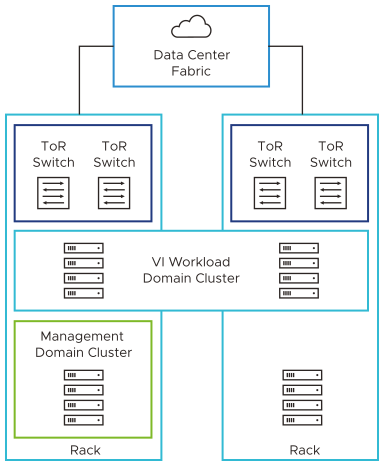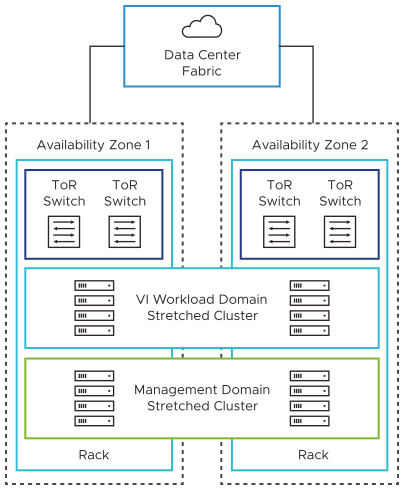VMware Cloud Foundation distributes the functionality of the SDDC across multiple workload domains and vSphere clusters. A workload domain, whether it is the management workload domain or a VI workload domain, is a logical abstraction of compute, storage, and network capacity, and consists of one or more vSphere clusters. Each cluster can exist vertically in a single rack or be spanned horizontally across multiple racks.
The relationship between workload domain clusters and data center racks in VMware Cloud Foundation is not one-to-one. While a workload domain cluster is an atomic unit of repeatable building blocks, a rack is a unit of size. Because workload domain clusters can have different sizes, you map workload domain clusters to data center racks according to your requirements and physical infrastructure constraints. You determine the total number of racks for each cluster type according to your scalability needs.
Workload Domain Cluster to Rack Configuration |
Description |
|---|---|
Workload domain cluster in a single rack |
|
Workload domain cluster spanning multiple racks |
|
Workload domain cluster with multiple availability zones, each zone in a single rack |
|


